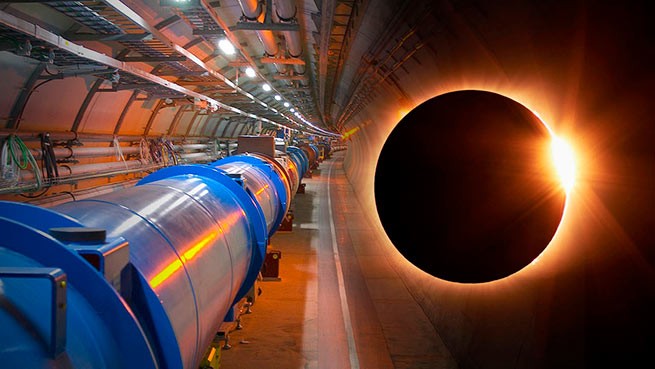The world's largest and most powerful particle accelerator will begin an experiment that has never been done with such intensity: On April 8, it will smash protons into each other in a search for the invisible particles that make up dark matter, which theoretically makes up 26 to 28% of “everything.” (more precisely, the observable) Universe, but it has never been discovered.
And that is not all: The experiment, for unknown reasons, must take place on the same day that a major solar eclipse will be observed in the northern hemisphere. The spectacle will be visible to about 32 million people along a narrow line in North and Central America, and will be the first total solar eclipse in the United States since August 2017.
CERN to test world's most powerful particle accelerator during April's solar eclipse to search for 'invisible' matter that secretly powers our universe https://t.co/BRfMydZoXc pic.twitter.com/KuVDjhHSFv
— Daily Mail Online (@MailOnline) March 28, 2024
Theoretical models suggest the existence of 17 different groups of dark matter particles, and the European Organization for Nuclear Research, better known as CERN, confirmed their existence using the Large Hadron Collider (LHC) in 2012. Now a team of specialists has restarted the LHC after a two-year hibernation in the hope of discovering the mysterious particles that make up dark matter.
Scientists have begun preliminary tests by sending billions of protons around the LHC's ring of superconducting magnets to boost their energy and ensure the $4 billion facility is operational.
Next month, CERN will accelerate protons in a 27-kilometre tunnel at almost the speed of light to recreate conditions that existed a second after the theoretical Big Bang. At full power, trillions of protons will race through the LHC accelerator 11,245 times per second, traveling just 11.26 kilometers per hour less than the speed of light!
What could possibly go wrong after all? The LHC will resume the experiment later this year and then go into extended hibernation to transform CERN into its next version, the High Luminosity LHC (HL-LHC). The collider is located at a depth of 396 meters on the border of France and Switzerland, and was first put into operation on September 10, 2008.
The LHC works by smashing protons together to separate them and detect the subatomic particles within them and their interactions. CERN researchers use protons because they are heavier particles. Their weight allows them to lose much less energy per revolution of the accelerator, unlike other particles such as the photon. The first attempt to restart CERN was made on March 8, but due to mechanical problems it did not take place.
The purpose of the LHC is to allow scientists to test particle physics predictions, including measuring the properties of the Higgs boson, or God particle, which has been the missing piece of the puzzle for physicists trying to understand how the universe works. Scientists believe that a split second after the Big Bang that gave birth to the Universe, an invisible energy field called the Higgs field was formed.
As the particles passed through this field, they gained mass, giving themselves size and shape, which allowed them to form the atoms that make up everything around and in the Universe. This theory was proposed in 1964 by former schoolboy Professor Higgs and has now been confirmed. And although the particles disintegrated almost immediately during the experiment at the LHC, scientists discovered that they left behind a trace indicating their existence.
The LHC is usually used for just a month a year, but has recently been shut down for long periods for upgrades – it was last shut down in 2022 due to the energy crisis in Europe.







More Stories
Eurovision 2024: the first rehearsal of Marina Satti in Malmö has ended
Palm Sunday
Palm Sunday, “breaking” fasting, and what you can eat